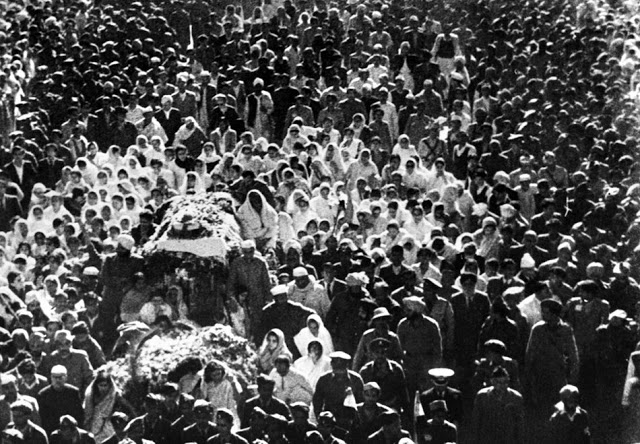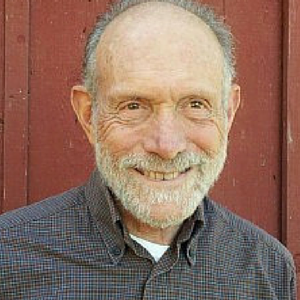On October 2, 2018, I was invited by the Indian Mission to make some remarks at the United Nation’s International Day of Nonviolence meeting. It happened to be Gandhi’s 149th birthday. Here is my speech:

I am so pleased and honored to be sharing with you this opportunity to honor and celebrate this 149th charkha jayanti, or ‘spinning wheel birthday,’ which is how Gandhi wanted his day to be remembered. My spiritual teacher once said that the 20th Century would come to be remembered not as the atomic age but the age of Gandhi; so I am proud to be with you to honor the man and his legacy.
A few days after the Mahatma’s assassination on January 30th, 1948 (ten days after my 11th birthday) the cover of Life Magazine was a photo depicting the outpouring of grief at his cremation, which left a distinct (and possibly deliberate) impression of otherness in my young mind. I suppose I was drawn to nonviolence, but vaguely, at an early age, but there was little opportunity to learn about it or even hear the word nonviolence in those days and my image of Gandhi was limited to that somewhat off-putting photograph.
So I didn’t really become aware of him until I met my aforementioned teacher in Berkeley, CA right after the Free Speech Movement, in 1966. That was Sri Eknath Easwaran from Kerala, who had met Gandhi, been deeply influenced by him (this perhaps is an understatement) and would go on to write two books about him and his legacy, Gandhi the Man and Nonviolent Soldier of Islam, of course Badshah Khan. From Sri Easwaran I came to understand that Gandhi was far greater than I could have imagined and at the same time, paradoxically, more accessible. As Gandhi himself said in what may be his most important of so many memorable quotes, “I have not the shadow of a doubt that any man or woman can do what I have done…”
It is nothing short of amazing how many men and women have taken up that very challenge in the decades since he uttered those portentous words. We are met at a time when nonviolence:
- is spreading over the globe – well over one-half of all countries have now experienced a major manifestation; the Global Nonviolent Action Database recently passed the 1,000 mark in its listing of notable campaigns,
- is growing in sophistication, with learning and the sharing of “best practices” spreading across national boundaries – student leaders of the Otpor revolution in Serbia stood side by side with the protestors of Tahrir Square,
- has drawn in new demographics, particularly women and indigenous groups – and we remember how critical it was when in 1911 two new groups were drawn into the Satyagraha struggle in South Africa: women (again) and the indentured laborers,
- seen the rise of new institutions, I cite particularly the institution of Unarmed Civilian Peacekeeping, of which the HIPPO report concluded that “Unarmed strategies must be at the forefront of UN efforts…”
- become a science in its own right; I assume most of us are aware of the groundbreaking study by Erica Chenoweth and Maria Stephan showing that nonviolent insurrectionary campaigns are twice as effective, take one third the time, and are much more likely to lead to democratic freedoms.
And today I am very pleased to announce what I make bold to claim is another historic breakthrough: a campaign launched by the Metta Center, on the one hand, and the M.K. Gandhi Institute for Nonviolence in Rochester, NY on the other: a campaign to use modern advertising technology to get nonviolence at last into the mainstream of modern life and society.
This campaign may be critical because even all these great developments do not tell the whole story. Nonviolence is at the core, I believe, of a vast cultural shift which is slowly but surely moving us from a materialistic vision in which human beings are objects, separate from one another, doomed to compete for scarce resources – a “vision” that makes violence, war and conceivably the destruction of life on earth inevitable – to a spiritual vision of unity and justice. After all, Gandhiji himself said that this was his ultimate purpose: “Through the realization of freedom of India I hope to realize and carry on the mission of brotherhood of man.” (Mahatma 2.353)
Metta is working on both fronts, nonviolent practice and the ‘new story’ in which nonviolence is embedded. Let me share with you this brief animation as an example of the many resources we have created for this purpose.
Along with this animation (and many other projects) we are making a major documentary, “The Journey Home: Nonviolence and the New Story of Human Destiny,” which we hope to finish in time for the 150th charkha jayanti. This film is central to our multi-year, cross-media campaign to mainstream nonviolence. Let me now introduce our partner in this great project, Kit Miller, Director of the MKGandhi Institute for Nonviolence in Rochester, NY.
Friends, on that fateful day, January 30, 1948, an American journalist asked an Indian colleague to help him understand the overwhelming outpouring of grief going on all around him. The colleague explained: “The people feel that there was a mirror in the Mahatma in which they saw the best of themselves. Now they fear that the mirror has been shattered.”
Let us dedicate ourselves in the coming year to making sure that mirror is not shattered!









Exciting work going on, Michael. You are on track to make NV mainstream, as you say. Using information technology is a very necessary piece of that.
Great speech Michael! The ‘new story’ video helps form a tangible connection to how each of us can practice nonviolence in our daily lives. We are really looking forward to the documentary and hoping that along with the help of partners the message of nonviolence can reach many millions that direly need it.